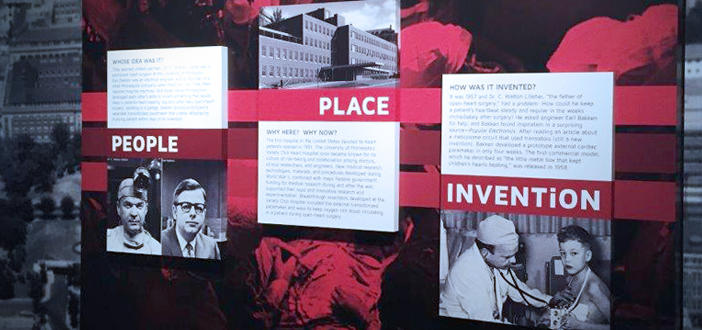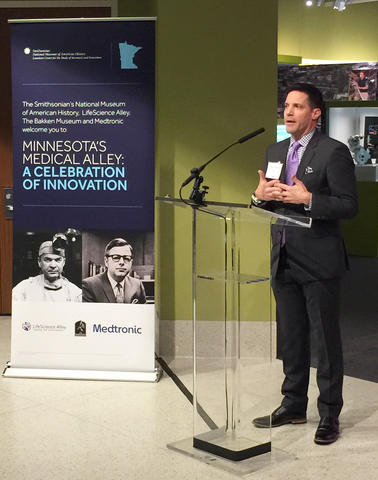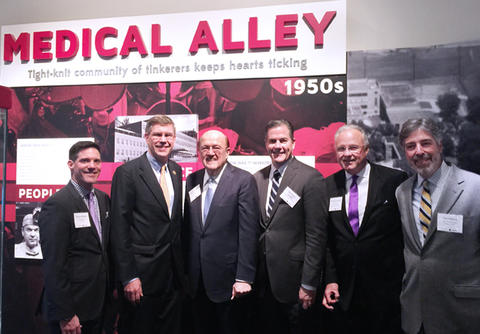Manufacturing Innovation Blog
Powered by the Manufacturing Extension Partnership
Medical Alley and Innovation Celebrated at Smithsonian’s National Museum of American History

In the 1950’s a doctor and an engineer in Minneapolis, Minnesota helped to launch an entire industry and with it, the fortunes of an entire region, Medical Alley.
Dr. Walt Lillehei, a famous heart surgeon, and Earl Bakken, an engineer, did not set out to create an industry. Rather, they needed to fix a problem. When there were power outages, medical devices like external pacemakers, would lose power because they used wall plugs. Dr. Lillehei wanted a pacemaker that would work without needing to be plugged in.
Bakken designed a battery powered pacemaker, and as the story goes, Dr. Lillehei implanted the device in a patient the next day.
This collaboration, physician and engineer, would go on to characterize a medical device industry that has in the subsequent 60 years developed thousands of inventions and innovations that have saved millions of lives around the world.
Bakken would see his company, Medtronic, grow to be the largest pure-play medical device company in the world, with nearly $30 billion in sales. From Medtronic, hundreds of other companies would start and solidify Minnesota’s place as Medical Alley, one of the strongest medical device clusters in the world.

Medical Alley has come to describe a region in Minnesota that spans roughly from Rochester, MN and its famed Mayo Clinic, through the Twin Cities of Minneapolis and St. Paul, all the way to the north of the state and the city of Duluth. Medical Alley is home to thousands of medical device firms, biotech firms, hospitals and research institutions.
This region has been recognized by the federal government with an Investing in Manufacturing Communities Partnership (IMCP) designation as a center of excellence in medical device manufacturing. Through this designation, community leaders from the private and public sector, the academic research institutions in the community and Enterprise Minnesota, an MEP Center, are collaborating to ensure that the things that made Medical Alley what it is today, continue tomorrow.

While each of the exhibits focused on a particular period of time for the region, in Medical Alley’s case the 1950’s, the showing of people for the exhibit demonstrates that Medical Alley is not history. With the support of the IMCP designation, Medical Alley remains a vital community, which is continuing to develop new technologies that save lives and reduce suffering.
And to think it all started because a doctor and an engineer needed to fix a problem with power outages.

